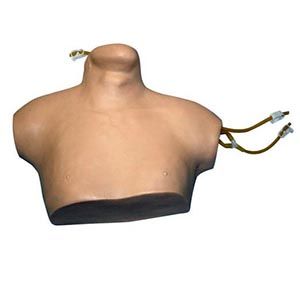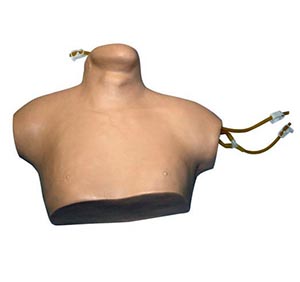ADA MED SUPPLY LIMITED
Phone:+86 19937901373
Tel:+86-0379-65160607
Email:adaanatomy@adaanatomy.com


The introduction of the central venipentesis intubation model has indeed had a profound impact on the medical training landscape. Industry experts generally agree that the application of such high-precision simulation models in medical education not only improves the effectiveness of training, but also provides doctors with a safer, low-risk learning platform. The following is an analysis of how the model is changing the landscape of medical training from the perspective of industry experts, teaching models, data and more:

Central venous catheterization model
1. Industry expert perspective: Improve the quality of skills training
Industry experts pointed out that the operation of central venous puncture intubation requires very high skills of doctors, and traditional training methods rely on actual cases or animal experiments, which is not only high cost, but also has a certain risk. The emergence of central venipuncture intubation model solves these problems. It simulates real vein structures with tactile feedback and precise vascular pathways, allowing doctors to train repeatedly in a risk-free environment. Experts believe that this kind of simulation training provides doctors with the skills and confidence necessary for practical operation, which greatly improves the efficiency and quality of training.
2. Teaching Models: More efficient Learning tools
In the teaching process, the central venous puncture intubation model not only familiarized doctors with the operation steps, but also helped doctors cope with complex situations by simulating different clinical situations, such as venous resistance and pathological changes. This model-based interactive learning approach allows students to move beyond books and theories and get hands-on experience. This teaching mode, which deeply combines simulation and theory, improves the comprehensive ability of students and enables them to adapt to clinical work more quickly.
3. Data support: Effect verification
The data show that physicians trained using the central venipuncture model have significantly improved success rates and operating time in actual clinical practice. Studies have shown that doctors' puncture success rates improved by about 30% after simulation training, while the accuracy of the procedure and patient safety were also guaranteed. In addition, the data also showed that doctors who received simulation training were more confident and efficient when dealing with complex cases.
Conclusion
The introduction of the central venipuncture intubation model has greatly changed the pattern of medical training. From the perspective of industry experts, this model not only improves the safety and efficiency of training, but also promotes the development of medical education in a more refined and personalized direction. Through data validation, model training has been shown to have a significant effect in improving clinical skills and patient safety, so it is undoubtedly an integral part of medical education in the future.